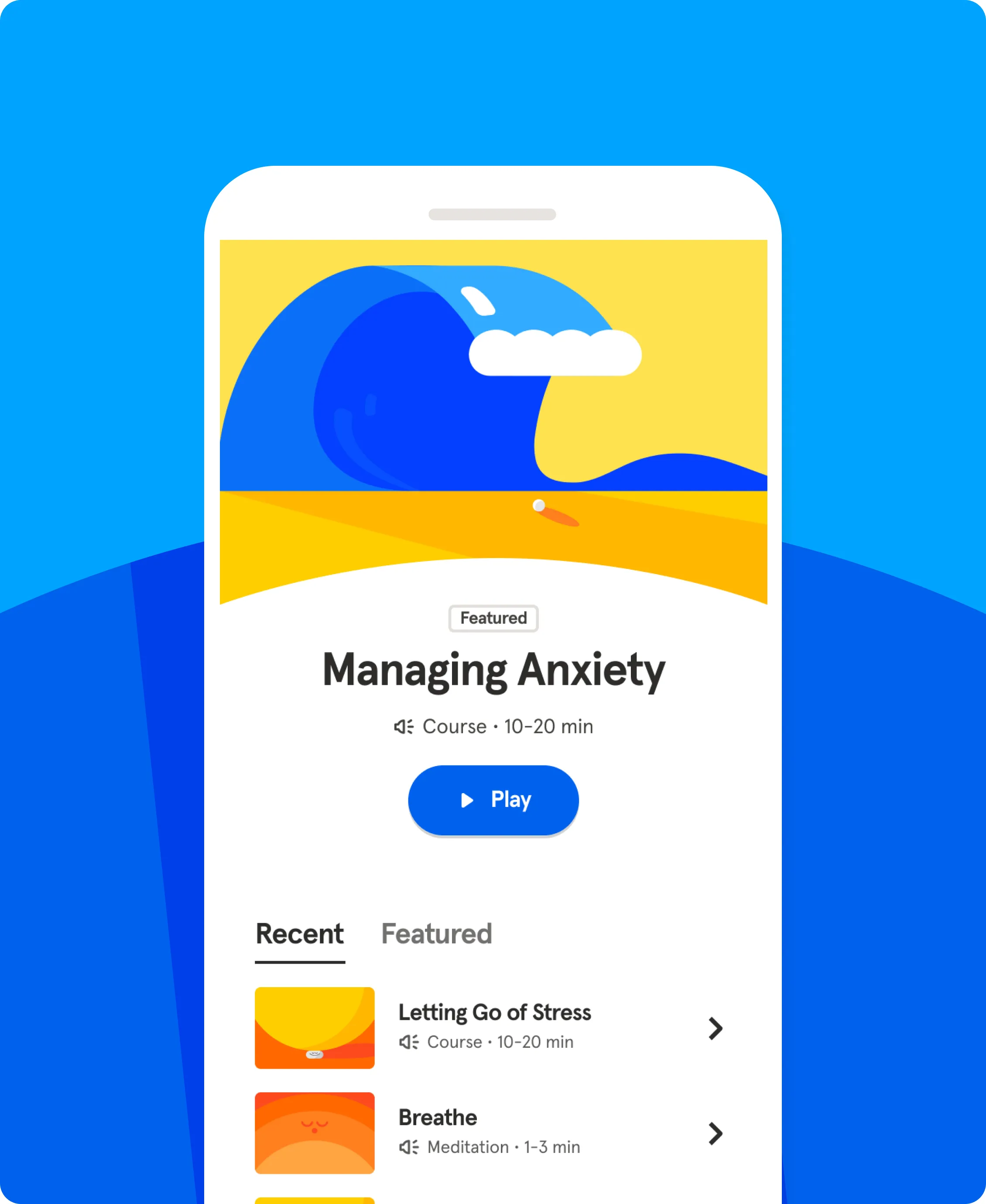Healthier people. Better business.
Empower your global organization with industry-leading mental healthcare, including a full EAP replacement, therapy, psychiatry services, coaching, and mindfulness.
Our comprehensive model offers employees and their families immediate access to coaching within two minutes, and access to therapy within two days. In addition, care concierge services are available to ensure a seamless, continuous care experience.
By offering engagement strategies, leadership workshops, robust reporting and more, we help you deliver the best mental health experience to your team and their families.

The beloved Headspace brand has helped millions of people look after their mental health. Its programs and content destigmatizes mental health and drives 5-10x higher engagement than traditional EAPs.

Our measurement-based care model enables high-quality, member-centered care that is devoted to helping people feel better, faster. What's more, we have the published research to prove it.




.svg)






.svg)






.svg)


.webp)
Replace your employee assistance program
Care for your global workforce with a full EAP replacement that includes:
Mental healthcare with a human touch

We understand the challenges people face, at work, at home, and everywhere in between. That’s why we deliver high-quality mental healthcare that meets people where they are and improves outcomes.

Content to feel clearer, calmer, and sharper in everyday life
When it comes to supporting healthy habit-formation for employees and their loved ones, there is no better practice to get behind than mindfulness — an effective, science-backed way to maintain good mental health. And we have a library filled with exercises, including:
Making the workplace a better place

Drive engagement, catalyze culture change, and get the most out of your investment with:
Evidence-based outcomes




Dr. Jenna Glover has a PhD in clinical counseling from Utah State University as well years of experience in counseling centers, academia, residential care, and hospital systems. She was most recently an Associate Professor at the University of Colorado. At Headspace, she ensures effective, high-quality care delivery.

Dr. Jon Kole, a board-certified MD with a decade of experience, leads Headspace’s psychiatry services program. Dr. Kole completed his doctorate degree at University of Pennsylvania and his residency at Brown University. His deep expertise ensures members with complex needs receive the right evidence-based interventions.

Erica Hayes has a master’s degree in social work and 12+ years of experience in behavioral health operations and management. As Senior Director of Care Enablement, Erica works with our Care and Business Operations teams to ensure our providers are able to deliver high-quality care at scale.
Diversity, Equity, Inclusion, & Belonging
One-size-fits-all doesn’t work. Our robust provider training approach ensures care is tailored to our unique and diverse members.
With 46% of providers identifying as BIPOC and in-country care for 200 countries, our care matches the diversity of our members.
Representation matters. Our meditation teachers and experts have diverse backgrounds and speak multiple languages, delivering culturally-responsive, inclusive content that resonates with all members.

What our clients are saying

Request a demo to learn more about how we can support your team.
Headspace is here to be your guide to better mental health, providing EAP, coaching, therapy, psychiatry services, mindfulness, and more to 4,000+ organizations worldwide.
.webp)





.webp)
